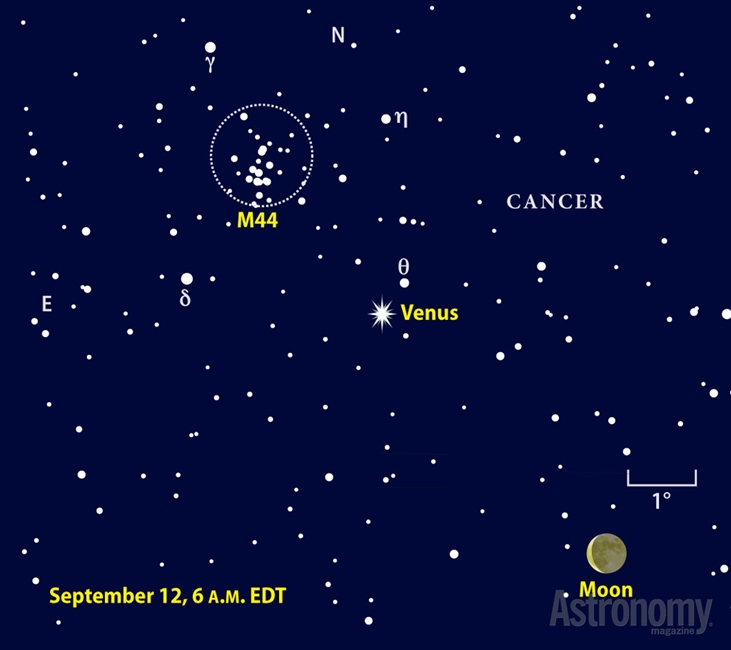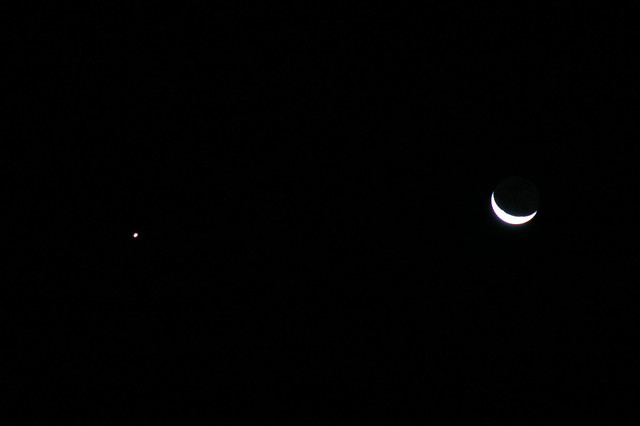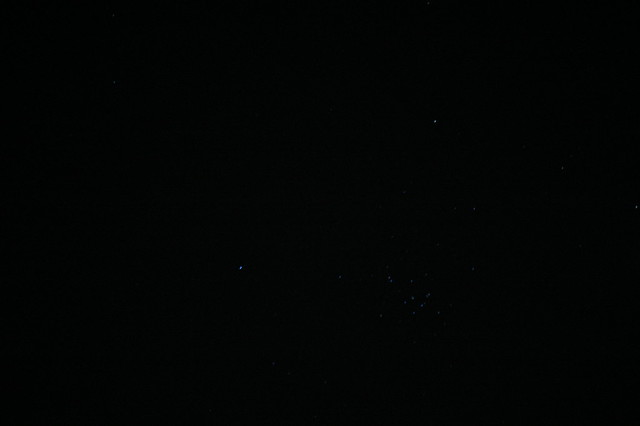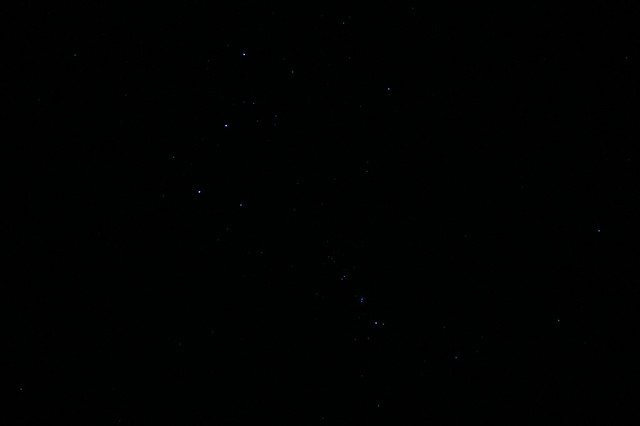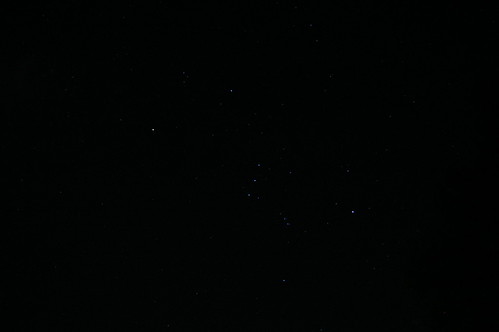 Friday turned into a very long day indeed. I took the afternoon off to accompany my husband to a doctor’s visit to discuss the next steps in managing his condition. That appointment went better than I thought it would and I’m grateful for the information and the prospects. We will persevere.
Friday turned into a very long day indeed. I took the afternoon off to accompany my husband to a doctor’s visit to discuss the next steps in managing his condition. That appointment went better than I thought it would and I’m grateful for the information and the prospects. We will persevere.
We got back home with just thirty minutes to spare before venturing out again, this time a couple of miles west of us (on the other side of Lansing) to attend the grand opening of a new farmer’s market. We’ve known the family that owns the farm for years, and we love to buy locally grown produce. We didn’t stay long as I needed to research and prep for the star party at Powell.
I received the ‘all clear’ or ‘go ahead’ e-mail from the ASKC star party coordinator earlier in the afternoon. I called my dad to see if he wanted to join me. He had a conflict so I asked my husband. He preferred to stay home. So I was on my own.
First thing I needed to do was dust off the 8-inch Dob. Then I attempted to collimate it. Then I dialed in the finder scope. I didn’t remember until later that I’d purchased, back in October, a new finder scope, so I missed the opportunity to try it out. The weather forecast for the rest of the weekend doesn’t look good for more testing opportunities.
Next, I found my Astro Quest Observing checklist and started planning my overly ambitious observing list for Friday night’s star party. I’ve been working on this observing award for nearly two years now. I really need to step it up and get it done! I got a bit distracted when I realized I hadn’t recorded some of the observations I made last fall and winter. Eventually, I returned to those items I’ve yet to observe that would be the best candidates for an early June dark-of-the-moon night sky. I used my Pocket Sky Atlas and the Android App SkySafari Plus on my Samsung Galaxy Note II to select twenty items. I added these targets to a list in the app:
- R CrB
- R Leo
- 48 Librae
- Thuban (in Draco)
- Adhafera (in Leo)
- Sarin (in Hercules)
- Owl Nebula (M 97)
- Blinking Planetary Nebula
- Ghost of Jupiter Nebula
- Cat’s Eye Nebula
- Sombrero Galaxy
- Black Eye Galaxy
- M 86 (in Virgo)
- M 81 aka Bode’s Nebula
- M 22 (in Sagittarius)
- M 5
- M 7 (aka Ptolemy’s Cluster)
- IC 4665
- NGC 6231
- NGC 6210
I partially disassembled the Dob for transport, placing the tube in its carrying case. I had some concern that the base would not fit in the trunk of my car, but it did, barely. I discovered my portable emergency red light battery needed charging so I plugged it in a couple of hours before I needed to leave. I found a lawn chair and a table I could take. I forgot two items that in hindsight I should have brought with me: 1) the monopod for my binoculars (to reduce shaking while observing) and 2) Deep Woods Off or some other Deet laden bug spray. I got everything into the car, except the charging battery, and watched the clock tick down to 7:30 p.m.
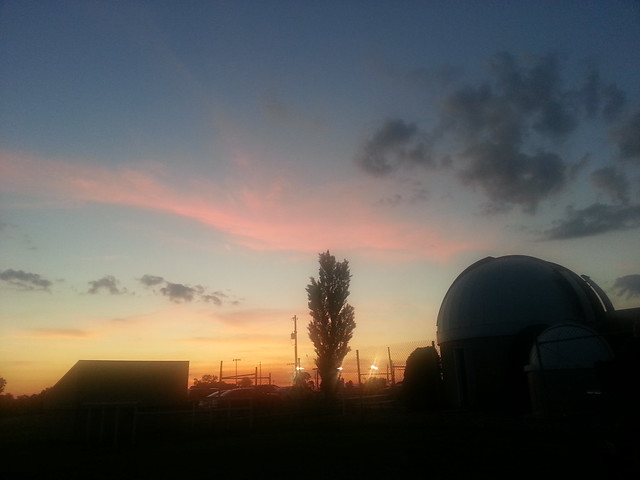 The drive to Powell Observatory near Louisburg took an hour, but I enjoyed listening to my audiobook and dodging Johnson County drivers. I arrived to a gorgeous sunset (see photos above and at right). I also noticed a baseball game in progress to the northwest of the observing field (you can see the field lights already on in the photo above). These lights became an annoyance for the next two hours.
The drive to Powell Observatory near Louisburg took an hour, but I enjoyed listening to my audiobook and dodging Johnson County drivers. I arrived to a gorgeous sunset (see photos above and at right). I also noticed a baseball game in progress to the northwest of the observing field (you can see the field lights already on in the photo above). These lights became an annoyance for the next two hours.
I opted to park in the parking light north of the observatory and across the street. Several ASKC members were already setting up their telescopes east of the dome. The parking lot to the west of the dome was filled with what I assumed to be a private party that had reserved the dome facilities for the evening. It took me three trips to get the telescope and accessories from the car to the observing field. While I made these trips, the star party coordinator informed me I could have driven my car around the dome onto the observing field to make my life easier. But I excel at doing things the hard way. Maybe next month I’ll be lazier.
I put the scope back together and checked the alignment of the finder scope. Then I settled into my lawn chair to wait for darker skies. Eventually, around 9:30 p.m., I got my binoculars out and waited for Venus, Mercury and Saturn to pop out in the twilight. I observed all three of these planets with binoculars and with the 8-inch Dob. I could clearly see that Mercury was half full (or is that more properly referred to as quarter illuminated?).
During this time (after sunset but before the ball field lights were extinguished), we saw the ISS pass over in the northern part of the sky.
I used my binoculars to locate M13 in Hercules and I used the scope to find M4 in Scorpius. I roamed around the sky with my binoculars, relaxing in my lawn chair, getting increasingly annoyed by the brightness of the ball field lights. I also started to notice an accumulation of dew on just about everything. When I would pick up my binoculars and look through them, often I would see bright halos instead of pin pricks of starlight. Any printouts I had sitting on my table quickly became sodden and unusable.
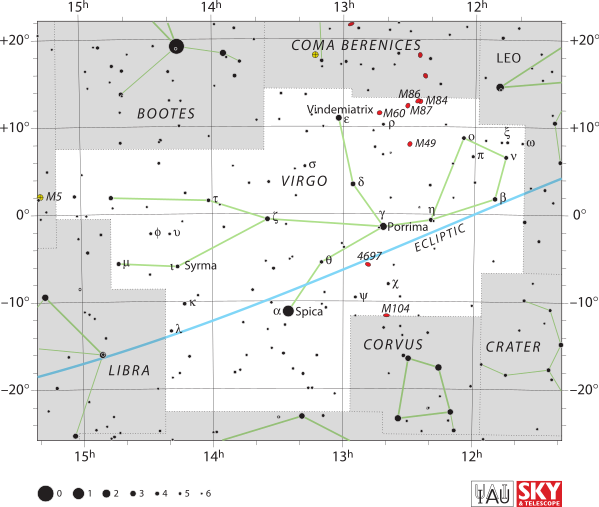 The ballgame finally wrapped up a few minutes before 10:30 p.m. We all cheered when the lights finally died and we could let our eyes adjust to the dark. Within fifteen minutes, I had found the Sombrero Galaxy (aka M 104) in the constellation Virgo. This was my first chance to really field test using SkySafari Plus on my smartphone, using the night vision setting (red display) and the ability to zoom-in to match the field-of-view I saw through my scope’s eyepiece. Made star hopping easier. No more juggling my reading glasses, a red light flashlight and my Pocket Star Atlas. To find the galaxy, I actually came up from the constellation Corvus (see chart above).
The ballgame finally wrapped up a few minutes before 10:30 p.m. We all cheered when the lights finally died and we could let our eyes adjust to the dark. Within fifteen minutes, I had found the Sombrero Galaxy (aka M 104) in the constellation Virgo. This was my first chance to really field test using SkySafari Plus on my smartphone, using the night vision setting (red display) and the ability to zoom-in to match the field-of-view I saw through my scope’s eyepiece. Made star hopping easier. No more juggling my reading glasses, a red light flashlight and my Pocket Star Atlas. To find the galaxy, I actually came up from the constellation Corvus (see chart above).
I had to abandon searching for dim nebula and the harder to find variable stars on my observing list because of the persistent haze that hung over the sky. While I was grateful for the lack of wind, this also resulted in no movement of the thin clouds. I had to focus on brighter objects. I did observe, in my binoculars, the stars Thuban, Adhafera and Sarin, but I did not attempt R CrB or 48 Librae, which require better seeing conditions to locate via star hopping.
 During the eleven o’clock hour, I set my sights on locating M5, a globular cluster, found in the constellation Serpens. I’ve tried a couple of times in the past to locate this cluster, but there are no bright stars near it to guide you to it. Since I’m trying to perfect my star hopping abilities (and didn’t bring my “goto” telescope with me), I again used the SkySafari Plus, zoomed in to with in a couple of degrees of the cluster, to find a suitable path among the faint stars. At first I attempted from the east (my left) using some stars in the Serpens constellation, but I kept getting lost (or nowhere), so I changed tactics and thought I’d try coming ‘up’ from Libra. No luck there either.
During the eleven o’clock hour, I set my sights on locating M5, a globular cluster, found in the constellation Serpens. I’ve tried a couple of times in the past to locate this cluster, but there are no bright stars near it to guide you to it. Since I’m trying to perfect my star hopping abilities (and didn’t bring my “goto” telescope with me), I again used the SkySafari Plus, zoomed in to with in a couple of degrees of the cluster, to find a suitable path among the faint stars. At first I attempted from the east (my left) using some stars in the Serpens constellation, but I kept getting lost (or nowhere), so I changed tactics and thought I’d try coming ‘up’ from Libra. No luck there either.

Finally, I moved to the west, to the right leg of the constellation Virgo, and used stars tau and 109 to draw a line due east (to the left) directly to M5. Huzzah! I found it at 11:30 p.m. I observed the cluster, as best I could with the less than stellar seeing conditions, and sat savoring the triumph of finally locating this illusive globular cluster.
 Several other star party attendees had started packing up their equipment, probably because of the dew and the haze. I wanted to stick it out, at least until midnight, so I quickly scanned through my observing list and decided to investigate the 13th constellation in the Zodiac (or rather, one of the thirteen constellations that cross the ecliptic) and find an open cluster, IC 4665. It should have been visible with binoculars, but I had little hope of that. Ophiuchus, also known as the Serpent Bearer, is a large constellation between Sagittarius and Scorpius. I used the nu and tau stars to guide me to the open cluster. I could see it well (although it barely fit in the field of view) via the scope, but could not discern it through my binoculars, which kept fogging over and became more and more useless as the night progressed.
Several other star party attendees had started packing up their equipment, probably because of the dew and the haze. I wanted to stick it out, at least until midnight, so I quickly scanned through my observing list and decided to investigate the 13th constellation in the Zodiac (or rather, one of the thirteen constellations that cross the ecliptic) and find an open cluster, IC 4665. It should have been visible with binoculars, but I had little hope of that. Ophiuchus, also known as the Serpent Bearer, is a large constellation between Sagittarius and Scorpius. I used the nu and tau stars to guide me to the open cluster. I could see it well (although it barely fit in the field of view) via the scope, but could not discern it through my binoculars, which kept fogging over and became more and more useless as the night progressed.
I still had a few minutes to go before tomorrow arrived, so I turned the scope northward, to Ursa Major, hoping to find the Owl Nebula. Unfortunately, looking north from Powell Observatory means looking back through the entirety of Kansas City and all its glorious star-obscuring light pollution. I made a half-hearted attempt to locate the nebula and decided enough was enough.
I switched on my portable battery and it’s ’emergency’ red light (in non-flashing mode) so I could see my observing site well enough to start packing up the equipment. Everything was soaked in dew. Thank goodness my Pocket Sky Atlas is designed for moisture-laden environments. The paper it’s printed on isn’t traditional paper. I suspect a high content of plastic.
Three trips later, I had everything back in the car. I pulled out of the parking lot at six minutes past midnight and pulled into my driveway an hour later. I went straight to bed.
Final thoughts? I was able to check off three of the twenty items from my observing target list. Not nearly as many as I had hoped to find, but given the conditions, I’m satisfied with the results. I’ll give it another go next month and as I can from my backyard, weather permitting.
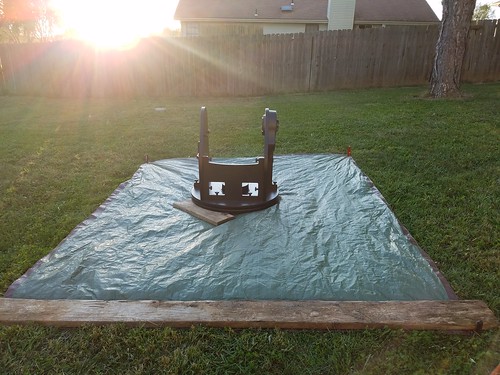


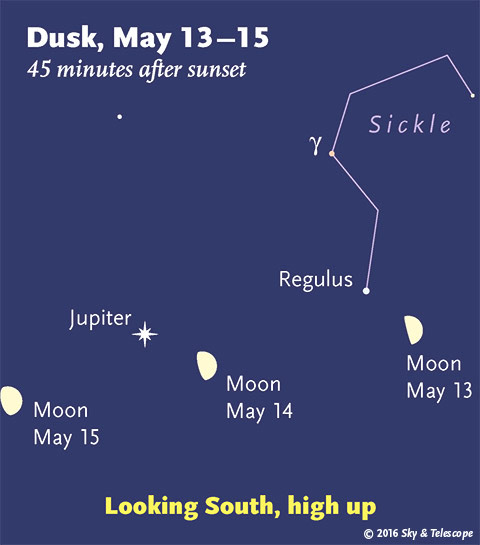
 A quick shout-out to everyone in the Kansas City metro area to come on down to the
A quick shout-out to everyone in the Kansas City metro area to come on down to the 
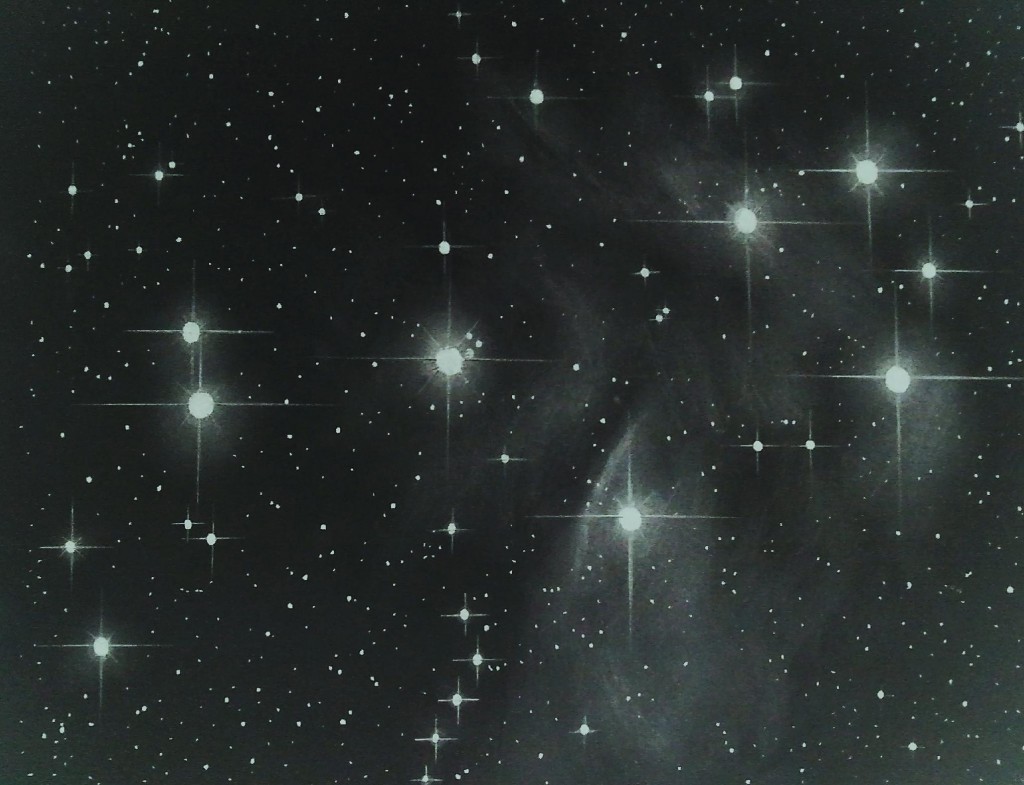


 The ballgame finally wrapped up a few minutes before 10:30 p.m. We all cheered when the lights finally died and we could let our eyes adjust to the dark. Within fifteen minutes, I had found the
The ballgame finally wrapped up a few minutes before 10:30 p.m. We all cheered when the lights finally died and we could let our eyes adjust to the dark. Within fifteen minutes, I had found the  During the eleven o’clock hour, I set my sights on locating
During the eleven o’clock hour, I set my sights on locating  Several other star party attendees had started packing up their equipment, probably because of the dew and the haze. I wanted to stick it out, at least until midnight, so I quickly scanned through my observing list and decided to investigate the 13th constellation in the Zodiac (or rather, one of the thirteen constellations that cross the ecliptic) and find an open cluster, IC 4665. It should have been visible with binoculars, but I had little hope of that.
Several other star party attendees had started packing up their equipment, probably because of the dew and the haze. I wanted to stick it out, at least until midnight, so I quickly scanned through my observing list and decided to investigate the 13th constellation in the Zodiac (or rather, one of the thirteen constellations that cross the ecliptic) and find an open cluster, IC 4665. It should have been visible with binoculars, but I had little hope of that. 